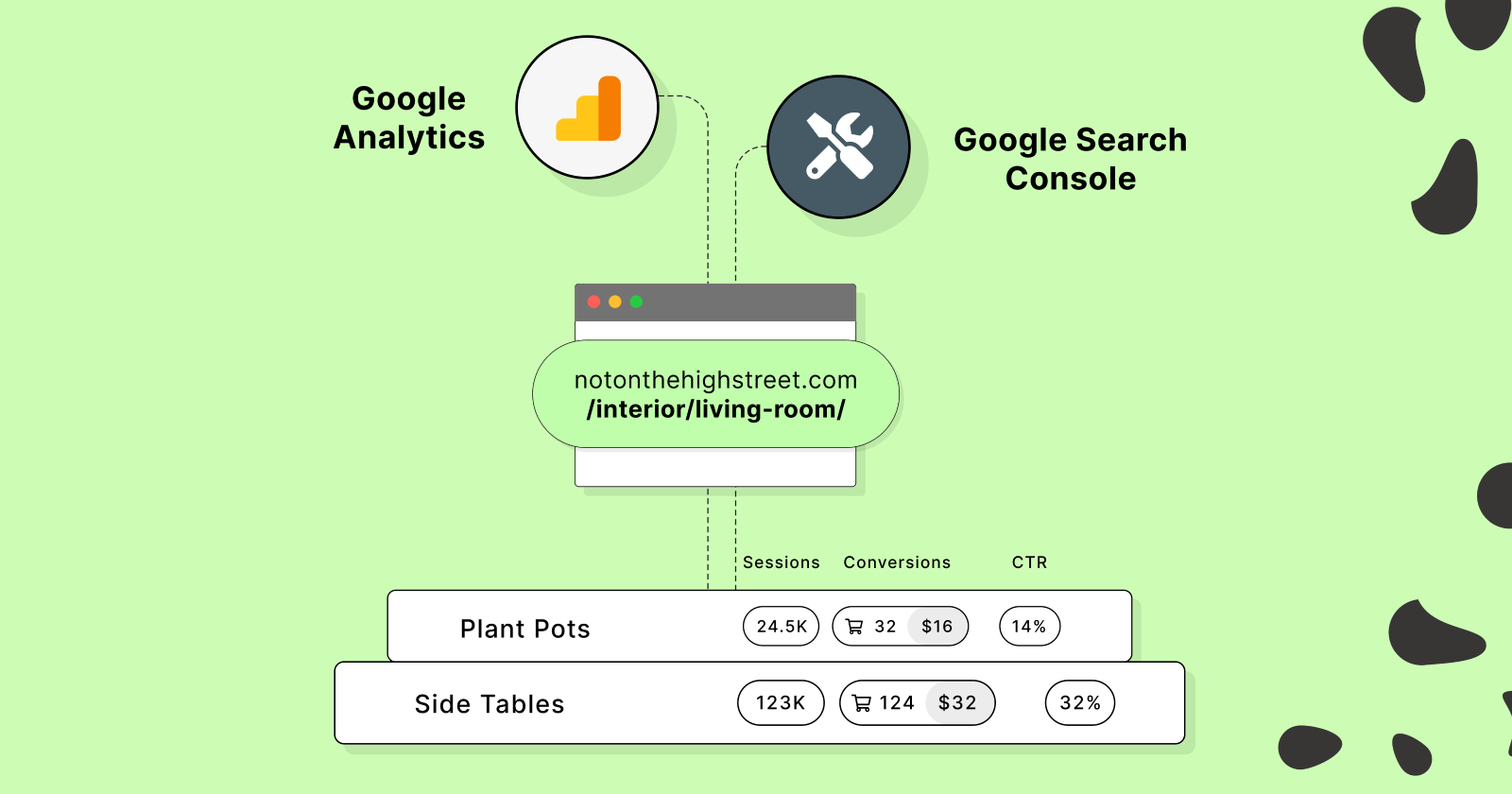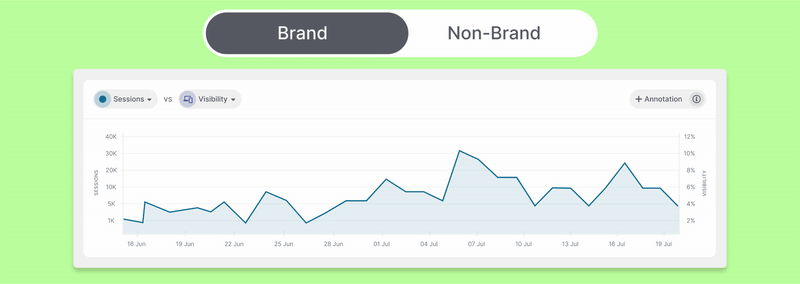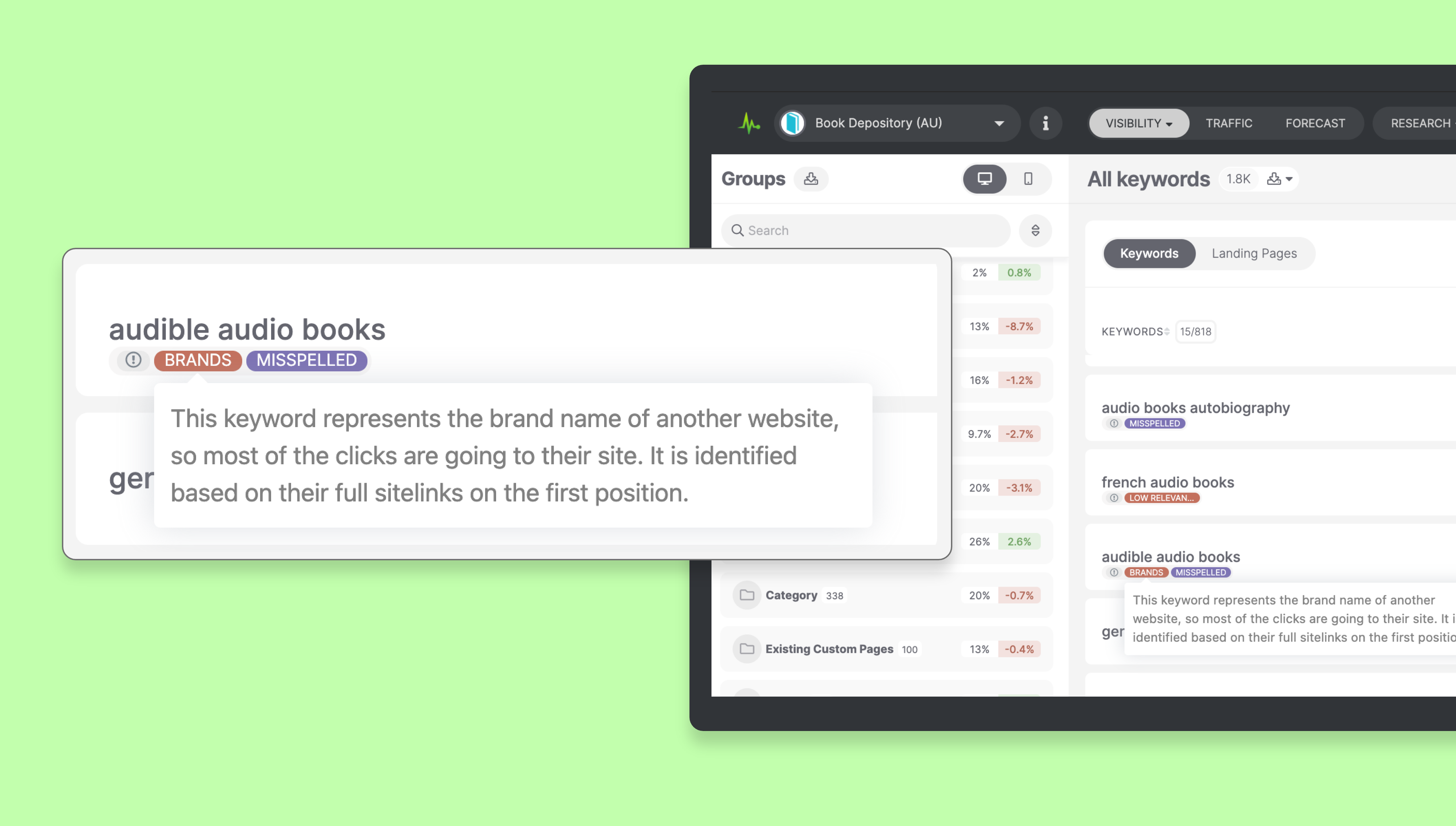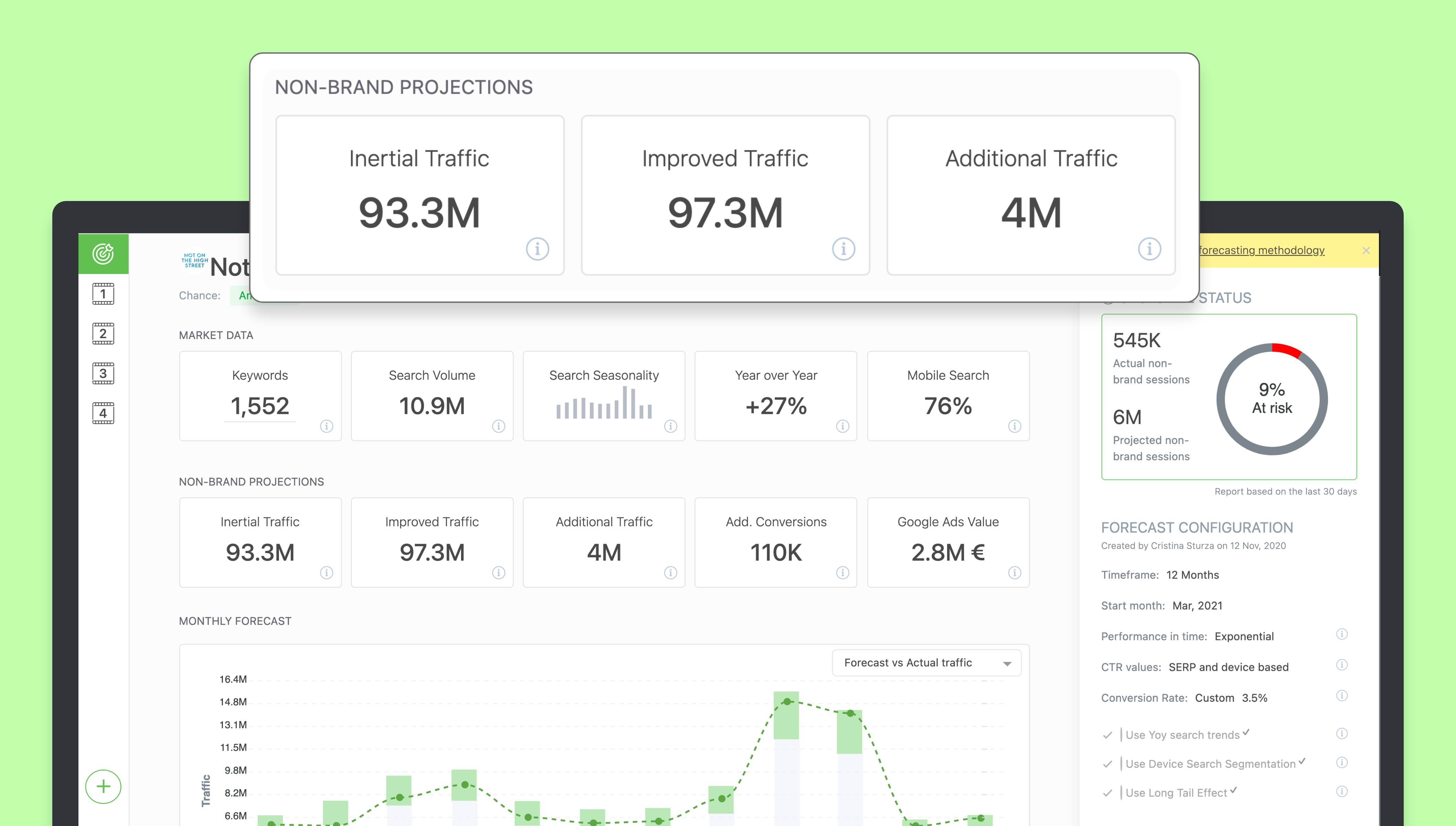Branded organic traffic is not SEO traffic.
We, at SEOmonitor, not only firmly believe that statement, but we created our whole platform methodology based on that core principle.
Don’t take our word for it, though – we will explain why in what follows.
What you should keep in mind throughout this piece is that the SEO tools you choose, influence how you view data, how you use it, and what processes you create in your agency, based on the tool’s available frameworks.
After all, each SEO platform comes with its own methodologies, visions of what SEO is and isn’t, and how metrics should be calculated.
With this in mind, let’s return to the issue at hand.
You might think that because organic traffic encompasses both queries that include your brand name (by which we mean navigational keywords) and queries related to your products and services, you should strive to optimize it all the same.
The more, the merrier, right?
This is one of the misleading online behaviors and flawed ways of looking at organic traffic. Because not all of the organic visits you get from Google represent SEO traffic.
What Is ‘Brand’ in the SEO Context?
Let’s (re)align on what “brand” is for SEO.
In brief, we talk about brand in this context when we refer to navigational keywords related to your company.
Sometimes people will type your brand name in Google just because it’s easier to get to the end result than typing your exact URL. Sometimes it’s because they want to navigate straight to the landing page they are interested in.
Let’s take Amazon’s example.
If a person is typing “Amazon com” in the search bar, the intention is quite clear. But what if someone types “Amazon com Trillion Dollar Coach book”?
This is also a form of branded or direct traffic because again the intention is to search for that specific book on that specific site.
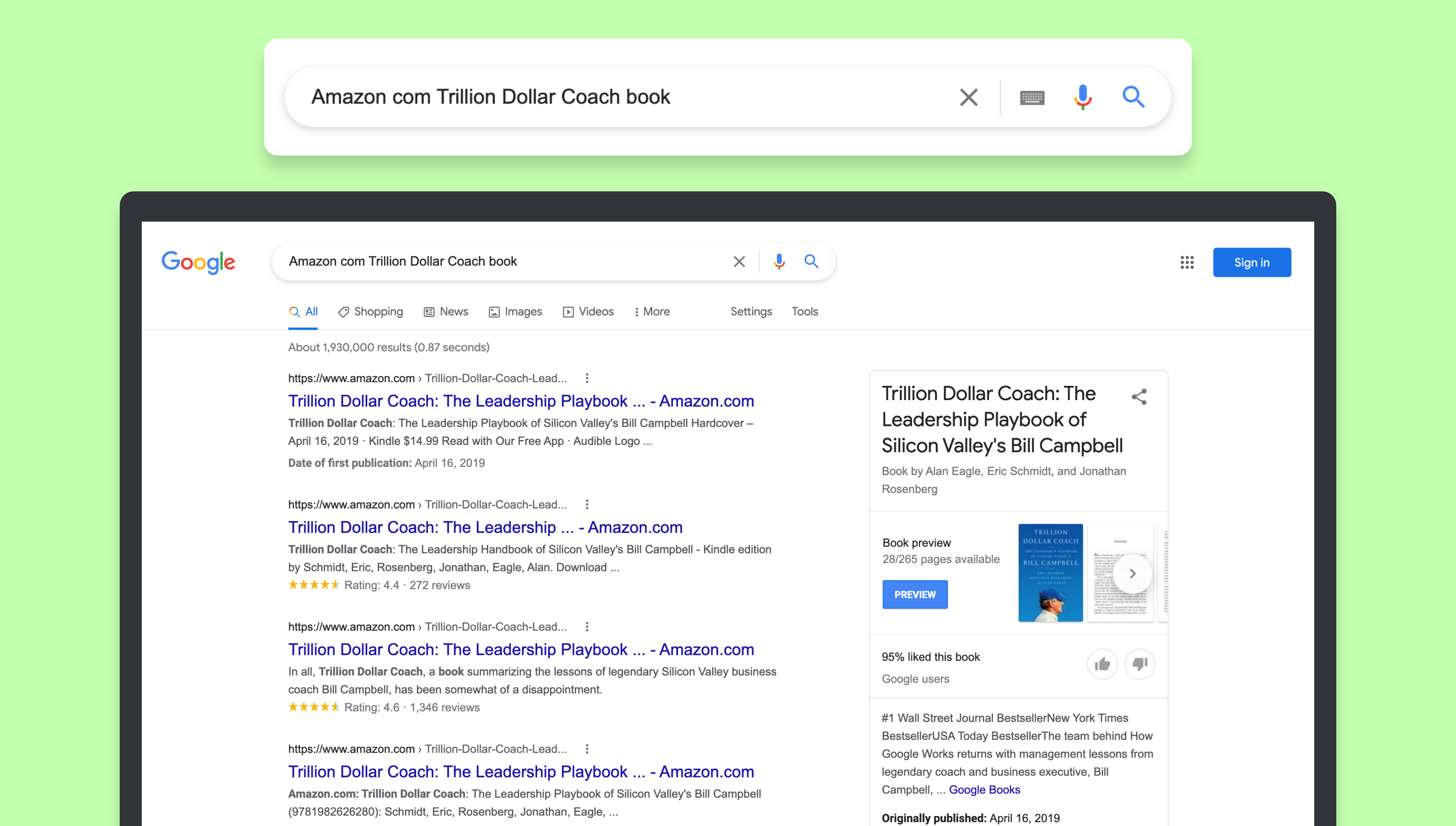
In contrast, if a person types “Trillion Dollar Coach book”, then they want to find out more about the book and are probably researching the best place to buy it from and/or the best price.
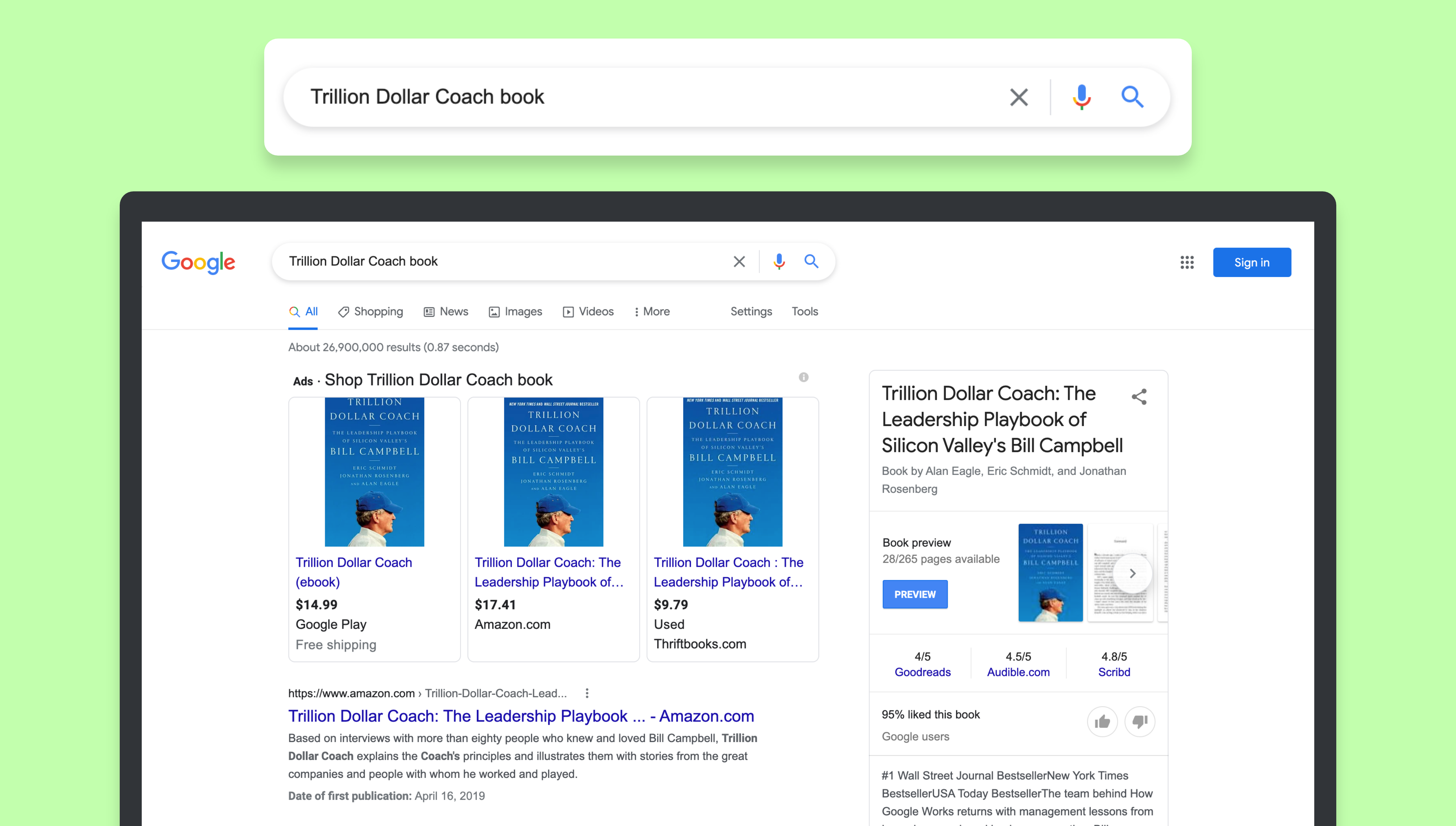
To be completely honest, transparent, and in control of your SEO impact, you have to access non-brand organic traffic only.
That’s quite a difference in search intent.
The first example speaks to your brand’s popularity, the other is competing for the user’s attention. It’s the latter that we can fully influence through SEO.
Why You Should Target Non-Brand Organic Keywords Only (& Measure Non-Brand Organic Traffic)
To be completely honest, transparent, and in control of your SEO impact, you have to access non-brand organic traffic only.
Avoid Misleading Calculations
Mixing brand and non-brand keywords means you can’t know a client’s real visibility in comparison with their competitors.
Due to efforts pertaining to paid, PR, marketing campaigns, and so forth, the client might seem to be performing really well, although the search landscape could be completely different. And that’s your playing field and the one you directly impact with your SEO strategy.
Think about this extreme example: including “amazon” in your targeted keyword group. All the relevant metrics would be muddled – imagine the search volume numbers going from 100,000 to 1 million.
Plus, you already own all the branded keywords and you’re making other channels work hard to keep that in check. You don’t need rank tracking or SEO for that.
That’s why getting the branded keywords out of the way is not only fair, but it gives you full control of reporting – you can explain how optimizing certain keywords led to growth in terms of conversions and revenue.
To be able to do so also means your tool needs a reliable solution to Google’s “(not provided)” so you uncover all the necessary details pertaining to the non-brand organic traffic. Easier said than done, as Google Analytics doesn’t help you here anymore.
What SEOmonitor does is pull data from Google Analytics and Google Search Console and distribute the organic traffic (visits and conversions or transactions) back into keywords and then split it between brand and non-brand. Therefore, after defining your brand keywords, you can switch between the two traffic segments and get insights into both types of traffic.
Measure Keyword Performance Accurately for Your SEO Strategy
Having the non-brand organic traffic accurately defined means being able to develop a good SEO strategy, because you know which non-brand keywords are driving traffic to your client’s site, and which drive higher conversions.
But what about competing on branded keywords?
Let’s take the Amazon example again.
If someone searches for “bookdepository com trillion dollar coach” and Amazon ranks on #4 for that query, it’s clear that the user intent is still navigational. They want to find that specific book on that site, so they will most likely click on the first result anyway. And Google knows that and it will filter the SERP results or even show the full site links accordingly.
Not only that, but when we talk about branded keywords, we talk about all branded keywords, including competitors or such high-search volume misleading keywords as “facebook” or “twitter”.
Mixing the two groups (branded keywords and non-branded keywords) further muddles your data, as high search volume keywords completely mislead your targets. For instance, your brand will always look better than competitors in terms of visibility in the search landscape (think high search volumes and good rankings) if you look at it like that.
That’s the reason for SEOmonitor’s automatic split and labeling, including highlighting seasonality, brand of others, misspellings, and many many more – we have complex mechanisms in place to make sure you always trust the data you see.
Avoid Distorting SEO Goals & Prove Your Strategy’s ROI
We’ve hinted at this one already, but it needs more explaining.
With the branded keywords grouped separately, you’ll know where the opportunity lies in the search landscape and where you can make a dent in business results. Think overlapping and non-overlapping non-branded keywords.
If you’re an SEO agency, this is a game-changer in the pitching phase. Imagine being the one that can accurately pinpoint to a client that their branded traffic amounts to 70% of their overall organic traffic and that you can significantly improve the 30% non-brand one, where the opportunity for SEO truly lies. The other one is the result of cumulative brand tactics (print, TV, radio, ads, etc.), so not something your agency directly influences.
Not only that, but say you do double the non-brand organic traffic and you don’t measure it separately – it will be an insignificant performance compared to the brand one. So you can’t prove your SEO performance.
So, having the non-brand organic traffic accurately measured, you’ll be able to:
- Create a realistic business scenario.
- Forecast potential business results.
- Show how achieving certain ranks for your targeted non-branded keywords will improve sessions, conversions, and ultimately revenue.
SEOmonitor’s forecasting module goes one step further and includes all the key variables that influence your targeted non-branded keywords such as seasonality, year-over-year trends, device split, search volumes, average CTR curves, and so on.
Building an SEO proposal like this leaves no room for interpretation, as you can present how non-brand organic traffic might look for the next 12 months with and without the SEO campaign.
Pro Tip: In the research phase, SEOmonitor helps you spot the best keywords to choose for your campaign with a unique Opportunity metric. Calculated as a score between 0 and 10, this metric quantifies the opportunity of optimizing any keyword relative to all the other tracked keywords in your campaign.
It takes into account all relevant keyword attributes (SERP data, quantity/volume, and current performance/rank) along with the tracked website’s difficulty to rank on those keywords.
In a Nutshell
The brand and non-brand organic traffic split is mandatory to accurately define SEO traffic and create an SEO strategy accordingly.
With branded keywords properly isolated, you can trust the keyword metrics you see and evaluate a client’s search real estate in comparison to other industry players.
Not only are you honest and show you’re trustworthy, but you can prove the business value of your SEO performance: directly correlating keywords and additional sessions, conversions, and revenue you impacted.
SEOmonitor’s core functionality of uncovering the not-provided and segregating brand and non-brand organic traffic helps you achieve all of the above with speed and efficiency.
We know that an SEO agency’s core tools are critical to their success, so we continue developing our features and functionalities so you can acquire, manage, and retain more customers.
Join us and our SEO agencies’ community in the journey to bring more transparency and measurability to the SEO industry.
Measure SEO performance
with a reliable SEO platform!
The opinions expressed in this article are the sponsor's own.


